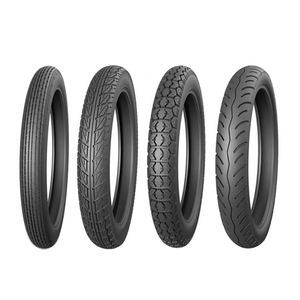Little Known Facts About Motorcycle Boots.
Wiki Article
The Only Guide to Motorcycle Boots
Table of ContentsAbout Motorcycle BootsThe Basic Principles Of Motorcycle Boots Fascination About Motorcycle BootsRumored Buzz on Motorcycle BootsThe 15-Second Trick For Motorcycle BootsThe Greatest Guide To Motorcycle Boots
The vital elements of modern bikes are offered below.; this has been utilized all with motorbike history however is now coming to be more common.It was widely undesirable and usually pertained to as a negative concept at the time. Today it is a made use of on some "thumpers" (single-cylinder four-strokes) that generally have dry-sump lubrication calling for an exterior oil storage tank. It has actually considering that gotten some prestige in the modern-day personalized bike world too due to the space financial savings it can pay for and the reference to an earlier age.
Though any tank for gas might be so called, the term is generally put on part of an engine system in which the fuel is kept and propelled (gas pump) or launched (pressurized gas) right into an engine. A motorcycle fork is the section of a motorbike that holds the front wheel and enables one to guide.
Motorcycle Boots Fundamentals Explained
The 'fork' on a bike is composed of numerous parts. The three-way trees (also understood as yokes) hold the fork tubes (which include the fork springs), and are fastened to the neck of the structure by the guiding stem.
Motorbikes have mainly, but not exclusively, been created with one to four cylinders, and developers have actually tried practically every possible format. The most typical engine configurations today are the solitary and twin, the V-twin, the opposed double (or boxer), and the in-line triple and in-line 4. A variety of others styles have actually gotten to automation, consisting of the V-4, the flat 6-cylinder, the level 4-cylinder, the in-line 6-cylinder, and the Wankel engine.
How Motorcycle Boots can Save You Time, Stress, and Money.
Chain-drive usages sprockets and a roller chain, which requires both lubrication and adjustment for elongation (stretch) that takes place via wear. The lube goes through being shaken off the fast-moving chain and leads to gunk and dirt accumulation. Chains do wear away, and excessive wear on the front and rear gears can be hazardous.Standard roller chain-drives endure the potential for resonance, as the effective radius of activity in a chain and sprocket mix regularly alters during the revolution ("chordal activity"). If a drive sprocket rotates at consistent RPM, then the chain (and the driven sprocket) should accelerate and decelerate continuously. The majority of this contact form chain-driven motorbikes are fitted with a rubber bushed rear wheel hub to eliminate this vibration concern.
These chain oilers differ in class, but all include substantially to the life of the chain. The customized of lubing by immersing the chain in a tin of warm grease ceased in the early 1970s, when most chains had rubber "O'-rings. The initial Suzuki RE5 of 1975 came with a back chain oiler, but the 1976 version had a closed chain, and its oiler was erased as "unneeded".
See This Report on Motorcycle Boots
They are not as long lasting when subjected to high horse power as a chain. You can not alter the length and change final drive proportions as conveniently as chains. And need bigger pulleys compared to chain sprockets to get an effective final drive proportion.A shaft-drive is typically entirely enclosed; the aesthetic hint is a tube expanding from the rear of the transmission to a bell real estate on the back wheel. Inside the bell real estate a bevel gear on the shaft friends with one more on the wheel install. This setup transcends in regards to noise and sanitation and is practically maintenance-free, with the exemption of occasional liquid adjustments.
The added equipment collections are a resource more information of power loss and included weight. Basically all high-performance auto racing motorcycles utilize chain-drive since they are the most mechanically efficient transferring power to the back wheel.

The Facts About Motorcycle Boots Uncovered
There are tires developed for dust bikes, touring, sport and cruiser bikes. Dust bike tires have knobbly, deep footsteps for maximum grip on loose dirt, mud, or gravel; such tires often tend to be less steady and noisier on paved surface areas.Exploring tires are normally constructed from a more difficult rubber compound for better longevity, these might last longer yet often tend to offer much less straight-out grasp compared to sporting activities tires at optimal operating temperature levels. Touring tires usually supply more hold at lower temperatures and can be a lot more matched to riding in cold or winter season problems where a sport tire may never reach its ideal operating temperature level.
These often tend to have more powerful sidewalls as they are typically fitted to larger devices. Motorsport or competing tires offer the highest possible of degrees of grip. Because of the high temperatures at which these tires typically run, use outside an auto racing environment is risky, typically these tires do not reach their maximum temperature which supplies much less than optimum grasp.
What Does Motorcycle Boots Do?

This can cause brake dive. Brakes can Visit This Link either be drum or disc based, with disc brakes being more typical on huge, modern or more costly motorcycles for their far premium quiting power, especially in wet conditions. There are numerous brake-performance-enhancing aftermarket components readily available for the majority of motorcycles, including brake pads of varying compounds and steel-braided brake lines.
Report this wiki page